
- News feature
Susanne – Switzerland’s biggest bell
04.10.2024 – Dölf Barben
The Grosse Glocke in the Bernese Minster is a big church bell. Also referred to as “Susanne”, it weighs almost ten tonnes and has a beautiful singing voice. There is no shortage of bells in Switzerland, but Susanne is the largest of them all.

Higher, farther, faster, more beautiful? In search of somewhat unconventional Swiss records This edition: Listening to Switzerland’s biggest church bell
Look at a map of Switzerland through squinted eyes – don’t you think it looks a little bit like a hotel reception bell? The canton of Schaffhausen is where you press at the top for the bell to sound.
Maybe this was meant to be, given that Switzerland is well known for its bells. You can hear them everywhere. There are thousands of bells in the towers of cathedrals, churches and chapels around the country. Even more hang around the necks of cows, sheep and goats.
And if that’s not enough, people carry bells around with them too. Like the Trychler groups with their ear-splitting processions, not to mention strident political views of late. Think, too, of the well-known children’s picture book “A Bell for Ursli” by Selina Chönz and Alois Carigiet – the story of a boy who wants to ring the biggest bell at Chalandamarz, the Grisons spring ritual to chase out the evil spirits of winter.
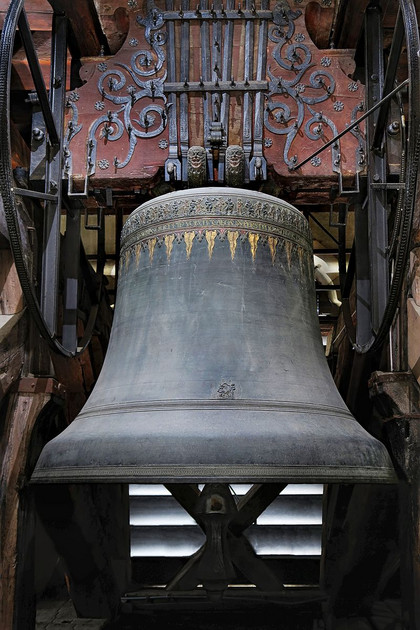
The Grosse Glocke in the Bernese Minster is a big church bell. Also referred to as “Susanne”, it weighs almost ten tonnes and has a beautiful singing voice. There is no shortage of bells in Switzerland, but Susanne is the largest of them all. Photo Keystone
It’s all in the acoustics
Bells reign supreme. But what makes them so special? Why don’t churches hang up plates of metal to hit instead? Matthias Walter knows why. The 46-year-old architectural historian from Berne is one of Switzerland’s most sought-after experts on bells.
“Knock on the side of a metal oil tank with a hammer,” he says. “All you will hear is a boom and a clang. That’s the difference.” Walter is standing in the lower bell tower of the Bernese Minster – the perfect place to talk about bells.
Above him hangs Switzerland’s biggest bell. Called the Grosse Glocke but also referred to affectionately as “Susanne”, it is 413 years old, weighs almost ten tonnes, and is tuned to E. Walter hits the bell with the palm of his hand. You hear the impact, but then a very faint, beautiful sound. “You won’t get that with a plate of metal.”
Nor with a traditional rounded cowbell forged from brass. “It makes a sound, but you wouldn’t call it music as such.” Church bells, on the other hand, are cast. They are usually made of bronze, which is a mixture of copper and tin. “Bells can sing.”
Thickness matters
People have been making bells since time immemorial, but it was only in the Middle Ages that bells took on their classical form, i.e. thicker at the bottom, which, according to Walter, is the secret behind getting a good clear strike note.

“Bells can sing,” says Matthias Walter. Photo provided
A bell will actually produce around 30 additional notes, some of which are barely audible. First you get the high pitches imparting various dissonances, which then create the characteristic chime. “Despite the discord, bells can sound beautiful,” says Walter. The Grosse Glocke is a fine example. It has quite a velvety timbre and no real din as such. “It sounds noble and calm.”
Susanne and five other bells at the Bernese Minster ring for every Sunday service. On feast days, the Grosse Glocke rings on its own. It never sounds like it’s being struck, enthuses Walter. “It’s a continuous incantation.”
The bells ring in unison once a year
The Bernese Minster has seven bells in total – three in the lower bell tower, four in the upper bell tower. They can be rung in many different combinations. Only once a year do they all ring at the same time: before service on the first Sunday of Advent.
What applies to individual bells also applies to the sound of the bells in unison. There will be imperfections. The bellmakers knew there were a few variables – such as diameter or thickness – that affect the pitch, i.e. how high or low the sound is. It is the same principle with wine glasses, says Walter. “They make a deeper sound the bigger and thinner they are.”
But bells often didn’t come out precisely the way the bellmakers wanted, he explains. Some churches have bells that don’t go well together. “And yet the sound can still be pleasant.”
The seven bells of the Bernese Minster are “pretty well harmonised”, according to Walter. Rung together, they produce “one of the most majestic and historically significant peals in all of Europe”. The Grosse Glocke, for its part, is “a true gem of world renown”.
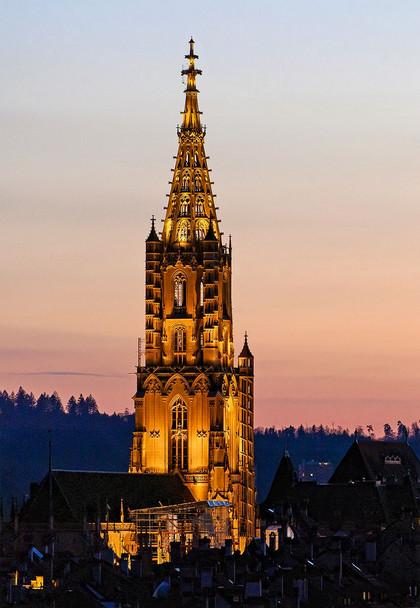
Berne has never had a bishop, so the Minster and its bells had to look very important instead. Photos (left and above): Keystone
My bell is bigger than your bell
Wouldn’t every church dignitary have wanted a bigger bell in their tower, just to say that they had the largest? Walter laughs and nods. Berne has never had a bishop, so the Minster and its wonderful bells were an “impressive way to compensate”.
Technically speaking, casting even bigger bells would not be a problem – bigger bells have indeed been made. “But it really wouldn’t make any sense,” he says. Giant bells also produce high tones, while the really low notes are very hard for humans to pick up. “It just results in a cacophony.”
Dancing with Susanne
During our conversation, it occurs to me that Walter has only referred to the big bell as Grosse Glocke, not “Susanne”. He says the latter name only came into use a few decades ago. Apparently, a bell-ringer once said that working the Grosse Glocke was about as hard as leading his wife Susanne in a dance. The name eventually stuck.
The Bernese Minster bells
The different bells in this recorded peal at the Bernese Minster come in one after the other at the following times (in seconds):
0' Silberglocke
4' Betglocke
9' Armsünderglocke
12' Predigtglocke
17' Mittagsglocke
22' Grosse Glocke / Susanne
You have to listen carefully to pick out the Grosse Glocke in this recording. Its bass remains in the background and fits seamlessly into the peal as a whole – belying the size of the actual bell.
Getting Susanne to swing from side to side was indeed far from easy back in the day. Eight ringers were needed. You can still make out the positions in which they stood in the bell tower to pull on the ropes. Since 1944, the bells in the Bernese Minster have been rung by an electrical mechanism.
Walter has an answer to every question. He explains how sturdy wooden beams help to neutralise the tremendous force exerted by the swinging of the bells, diverting it downwards. A bell swinging in synch with the natural swaying of the tower is more dangerous, he says. “The swaying can get worse. Like when people walk over a bridge in lockstep.” Ironically, the second-smallest bell at the Minster is “the most dangerous of them all”.
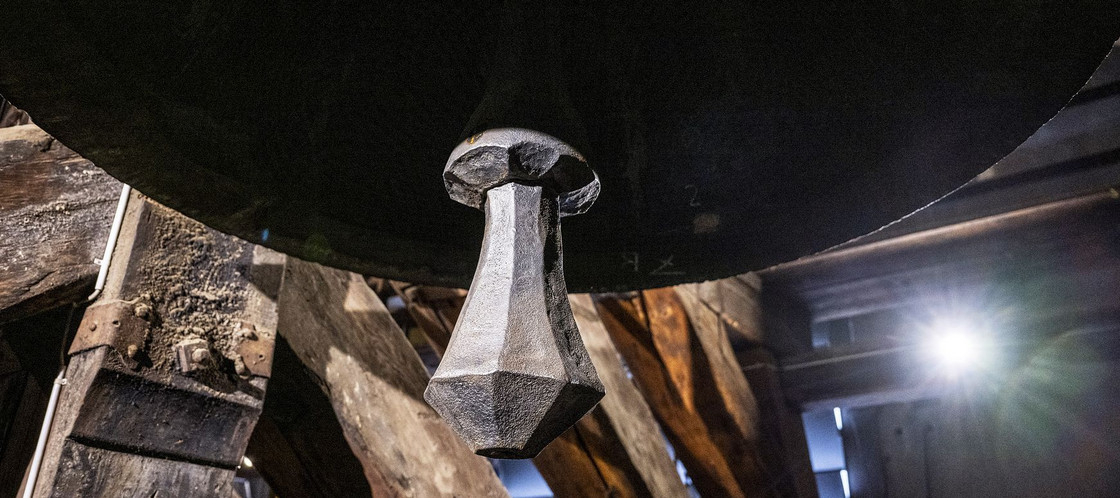
The bell striker dictates how the bell sounds – and how loud the bell is. Specially designed bell strikers are used these days to reduce the volume. Photo: Keystone
Parishes experiencing problems with one or all of their church bells often come to Walter for advice. At the Minster, Walter suggested over 20 years ago that the Armsünderglocke (or poor sinners’ bell) be rung again as a solitary bell. It was an awkward subject to broach, because the Armsünderglocke used to be the Henkersglocke (or executioner’s bell), which was sounded 65 times between 1735 and 1861 to herald hangings. The Armsünderglocke now rings every evening.
Taming the bells
Walter is also the man to call when neighbours complain about the ‘noisy’ bells. He has developed bell strikers that don’t have to swing as much because they are extended on both sides in the two directions they move. This more or less halves the volume. The specially designed bell strikers have another effect, and a quite remarkable one at that: shrillsounding bells suddenly begin to sing like Susanne at the Bernese Minster. Not only is Matthias Walter a bell expert, he is a bell tamer.
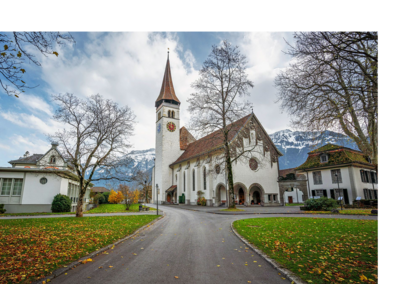
Interlaken, Schlosskirche Photo: iStockphoto
The sound of Swiss church bells
Church bells ring in the following Sunday every Saturday evening at 5.20 p.m. on Swiss radio (SRF). The “Glocken der Heimat” is an institution. However, the collection of some 300 different peals has not been expanded for a good few years.
Bell expert Walter, who contributed many of the recordings, says people still listen to the radio programme. However, a lot of peals can now be found on other platforms like YouTube.
The recordings of 300 or so selected peals are available on the SRF website, as is information about the history and set-up of the bells used in each peal.






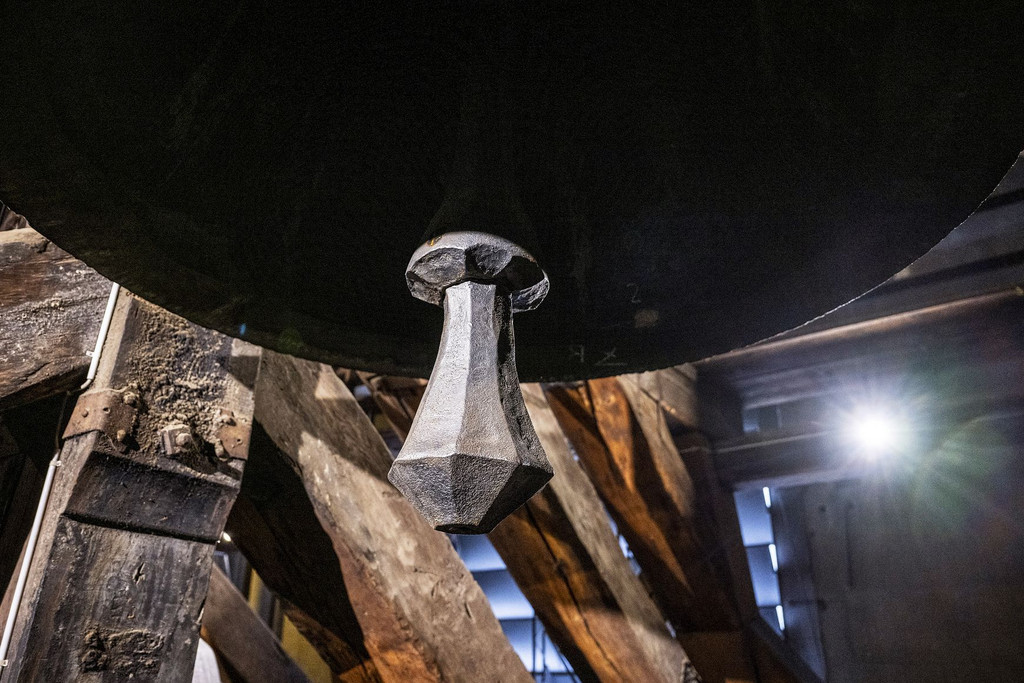
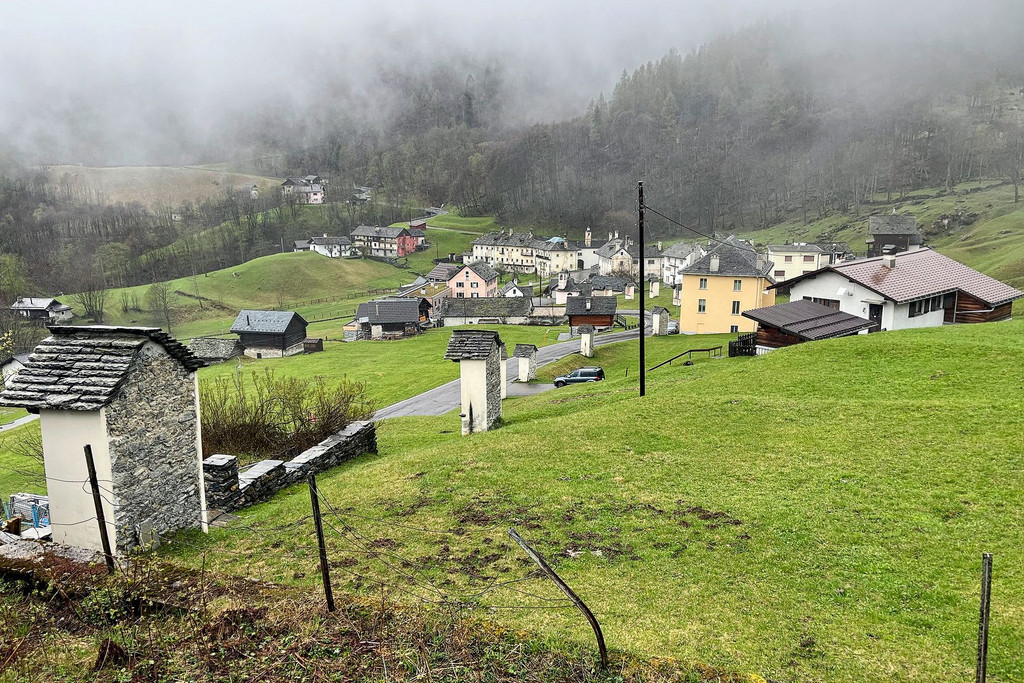


Comments
Comments :
Als ein RÜETSCHI schlucke ich alles über Glocken. Vielen Dank für einen interessanten Artikel.